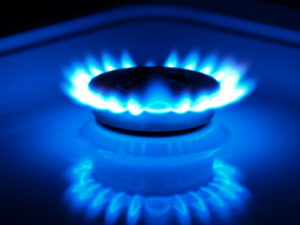 Natural gas declined on Thursday, but was poised for the largest monthly gain in more than 4 years, ahead of a government report that may show US gas inventories fell by a larger than the five-year average amount. The energy source continued to draw support by the freezing cold US weather conditions, which forced Americans to crank up the heating.
Natural gas declined on Thursday, but was poised for the largest monthly gain in more than 4 years, ahead of a government report that may show US gas inventories fell by a larger than the five-year average amount. The energy source continued to draw support by the freezing cold US weather conditions, which forced Americans to crank up the heating.
On the New York Mercantile Exchange, natural gas for delivery in March fell by 4.16% to trade at $5.238 per million British thermal units by 12:43 GMT. Prices hit a session high at $5.475 per mBtu, while day’s low was touched at $5.214 per mBtu.
Yesterday, prices touched $5.481 per mBtu, the strongest level since February 16th and were poised to settle the month 22.8% higher, capping the biggest monthly advance since September 2009. Prices settled last year 26% higher, the best performance since 2005 and second straight annual advance.
US gas inventories levels
The weekly EIA US gas storage report, due to be released later today, may show that natural gas inventories fell 231 billion cubic feet in the week ended January 24th, according to the median forecast of 15 analysts in a Bloomberg survey. According to data by the EIA, the five-year average drop for the week was 162 billion, while supplies decreased by 191 billion a year earlier.
Total gas held in underground storage hubs equaled 2.423 trillion cubic feet as of January 17th, 19.8% below last year’s 3.021 trillion stored. The deficit to the five-year average narrowed to 13.2% from previous week’s record 14.9%.
According to data by the Energy Department’s statistical arm, supplies have fallen 37% in the past 10 weeks.
At the same time, the US investment bank Goldman Sachs lowered its end-of-March inventory levels’ forecast to 1.39 trillion cubic feet from an earlier estimate of 1.61 trillion cubic feet.
According to another report by Mizuho Securities USA Inc., cited by Bloomberg, inventories may drop to 1.1 trillion cubic feet by March 31, which would be the lowest since 2004.
Short-term weather outlook
NatGasWeather.com reported on January 30th that the series of Arctic blasts pushing deep into the central and eastern US had finally come to an end. Areas of light to moderate snowfall are expected today across the Midwest.
Over the coming days, high pressure will build into the central and eastern US, allowing temperatures to rapidly warm to near or above normal across much of the southern and eastern US, including the high population areas along the Northeast coast. According to the website, chilly air will remain over the Midwest and portions of New England, which will continue to support high natural gas and heating demand.
The first one may track out of the Plains Saturday and push into the eastern US Sunday, bringing areas of rainfall over the milder south and accumulating snows over the Midwest. A much stronger storm may develop next Tuesday and could lead to strong thunderstorms over the southern US and heavy snow with blizzard conditions over the northern US.
Chilly long-term weather forecast
The long-term weather forecasting models called for overall freezing weather conditions over much of the US. NatGasWeather.com’s extended forecast for the week ended February 12th, called for a very active weather pattern to take place, as a cold Canadian air tracks into the Midwest, Mid-Atlantic and Northeast, bringing back below normal temperatures. The temperatures will drop to single digits and teens, which will lead to several days of high natural gas and heating demand.
According to the website, the pattern becomes difficult to be predicted, but it will certainly stay quite active with exciting weather continuing over much of the south-central US and northern US. The latter will maintain moderate to high natural gas demand at least until mid-February.
According to AccuWeather.com, temperatures in Cleveland on February 2nd may bottom at 10 degrees Fahrenheit, 14 beneath average, while the low in Detroit may hit 3 degrees, below the average of 21 degrees. Temperatures in Chicago are expected to hit -7 degrees Fahrenheit, 26 below normal.
When cold weather is expected, natural gas surges as increased electricity demand to power air-conditioning calls for more supply of the fuel, which is used for a quarter of U.S. electricity generation. Above-average readings in the winter season have the opposite effect. Consumption usually picks up from November through March. According to the Energy Information Administration, power generation accounts for 32% of U.S. gas demand and 49% of U.S. households use the energy source for heating.





